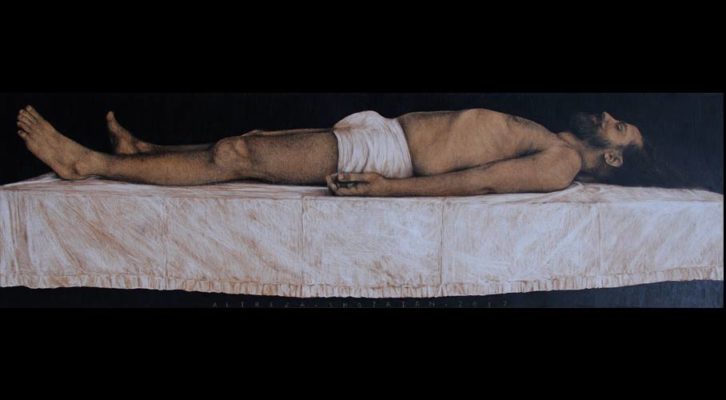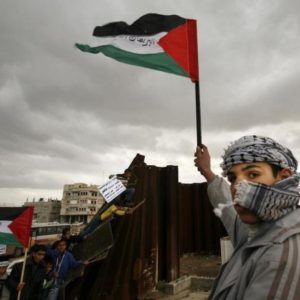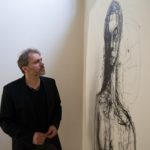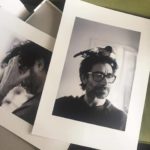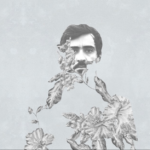Alireza Shojaian invited our Arts and Culture contributor, Christiane Waked to his studio to discuss what it is like to be an Iranian painter in Beirut.
C.W: Through your paintings, we feel like you belong to another space, dimension or even century. Do you feel like you are an old soul?
A.S: “I am an old soul” maybe, sometimes I think I am despite being only 29. Although every day I keep discovering new things but I feel like I have kept images from previous lives. Sometimes, I discover a new place but it feels like a “déjà vu” as if my subconscious kept it stored in my memory. This translates into my art but in my life in general.
C.W: Tell us about your life in Iran before settling in Beirut?
A.S: I grew up in Tehran and obtained my Bachelor in painting from the “Islamic Azad University”. I went on to continue my Master degree and decided that the theme of my thesis will evolve around queer art. Obviously, there were very few books on that subject in Iran and that was the main reason that made me want to move to Beirut where I can find more references on this particular topic.
In Iran, I was so frustrated because the only thing I read about queer art was a paragraph of Terry Barrett’s book “Criticizing art” so moving to Beirut was the obvious choice because I wanted to make a solo exhibition.
I think the universe aligns you with the right people when you set your mind on something. Before moving to Lebanon, I met in Tehran, the owner of the renowned Lebanese gallery “Artlab”, Antoine Haddad who saw my work and believed in my talent and capacities. He encouraged me to come to Beirut and invited me to do an exhibition in his gallery, which I did in February 2017.
Following this invitation, I took all my drawings and came back to settle in Beirut. I realized after my exhibition where my passion is and that I don’t need an academic diploma to confirm who I am as an artist so I dropped my Masters.
When people cry in front of one of my paintings, this is the highest recognition I can get.
C.W: How is the Lebanese public reacting to your paintings?
A.S: what I love is that the public from different ages showed up to my exhibition, kids, adults, and seniors reacted differently but the reaction that touched me the most came from a young lady who expressed how happy she is that I am in Lebanon because the Middle East needs my art.
These kinds of comments give me more and more responsibility to pursue my art engagement and I would love to express through “The New Eastern Politics” my gratitude towards the Lebanese.
Beirut gave me the freedom to exhibit my work and to be myself. It gave me the energy to mature in my work.
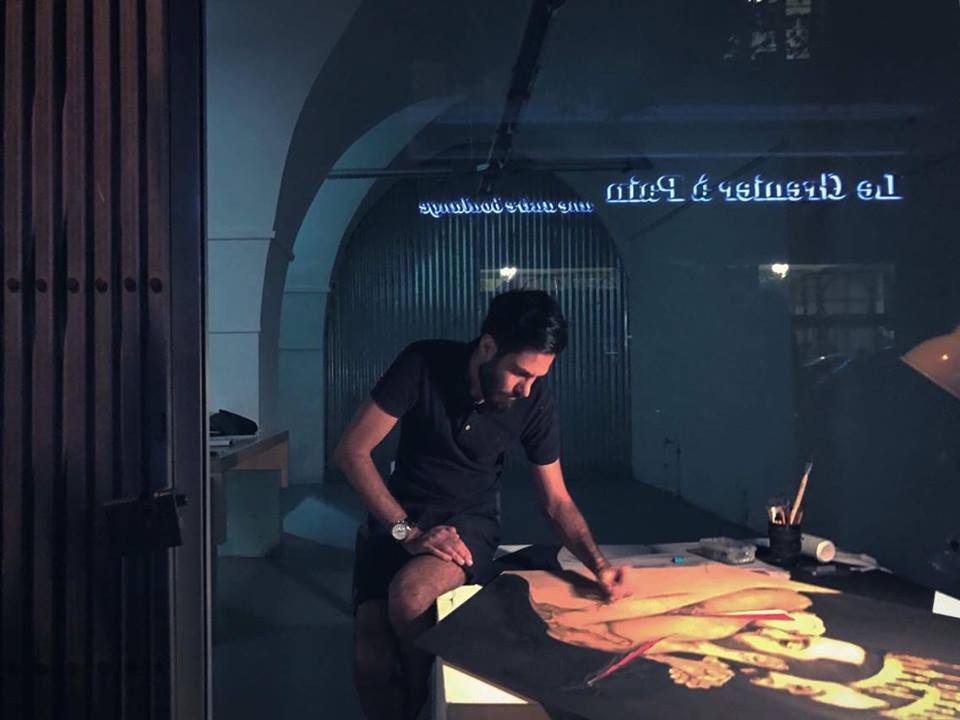
C.W: How did you find the art scene in Beirut? Is it how you imagined it back in Iran or were you disappointed?
A.S: I don’t judge other artist’s work, I was simply looking for a city in the Middle East that gives freedom to artists to share their insights with no censorship.
Queer art is not acceptable in other cities in this region. Beirut is really a tolerant city that allows artists like me to express themselves. Europe and the United States are years ahead of us regarding this subject.
Today, I feel the necessity to talk about queer art because I want to be the voice of the unheard, I want people like me to feel empowered and loved.
Do you know Christiane how difficult it is to be different in this part of the world?
(C.W: I know how difficult it is to be fat in Beirut, there is always a shame that follows and labels you. Do you mind if we give each other a hug although that might be seen as unprofessional?)
(After a real heartfelt hug, we resume the interview)
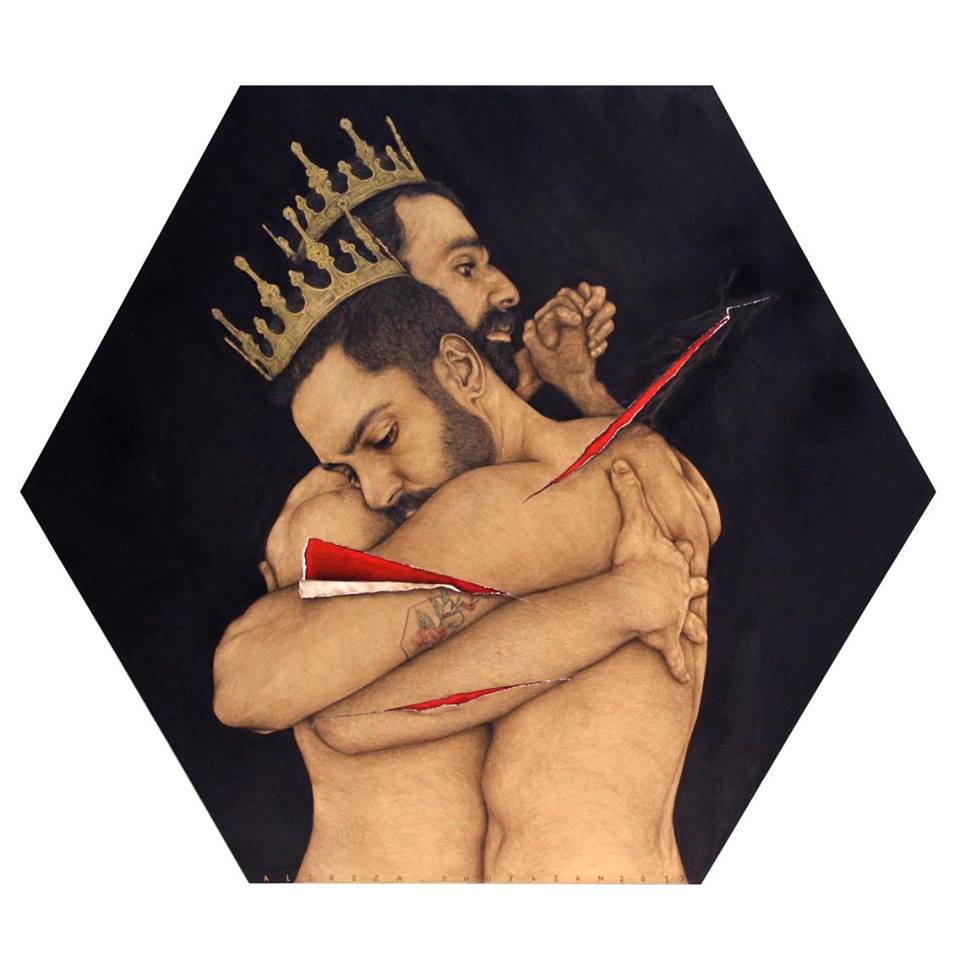
C.W: Tell me about your experience in Beirut Art Fair.
A.S: It was an intense experience as I presented my painting “The perfect moment” which is two men embraces each other.
“The perfect moment” is the title of the final exhibition of the American photographer, Robert Mapplethorpe who died at the age of 42 because of AIDS in 1989. This exhibition, which was held in Washington DC the same year of his death, faced so many controversies and people protested against it.
I am proud that years later, I was able to use one of his pictures titled “Two men dancing” and I painted the same composition. It is my tribute to this wonderful photographer who always wished to live enough to see the fame.
My painting is a self-portrait with a Lebanese performance artist, Khansa. I feel like I kept the legend of Mapplethorpe while creating my own.
(C.W: you know that you are creating history and years later someone will pay you tribute)
Khansa is himself a queer artist and for both of us, this painting holds a powerful and strong message.
Being part of this art fair meant a lot because everything I do is destined for regular people. My message is only for them.
While I was preparing this painting, I stayed for one week behind the showcase of the gallery where I work so people who are passing on the streets can see the progress of this painting.
From the second day, it was obvious that there were two men embracing. Some people just crossed the road and ignored it, especially the one who had kids with them.
Other people loved it and took pictures even sharing it on social media.
The breakthrough of this painting is that I was breaking taboos. I wanted to catch the eye and to shock in order to people respond and not ignore it.
At the art fair, a lady told me that she loved my painting technique but she disagreed with the subject.
I am happy that I made people react whether they agree or not.
I want to seize the opportunity to thank Artlab gallery who gave me the space to promote my art. When I was in Iran, I wrote to many Lebanese galleries, but no one wanted to take the risk and exhibit my paintings as they were afraid to lose clients and be judged by society.
C.W: Among queer painters who inspire you the most?
A.S: There were many brave artists who did their queer art during a period where this art was still attacked like Mapplethorpe and Andy Warhol.
I like the attitude of both of the aforementioned artists as they didn’t care how society judged them and continued to make art despite all the critics.
These artists inspired me to leave my home and my family to make paintings that represented me but also on a larger scale to be able to change things in the environment of the Middle East for people like me.
During my last group exhibition in Tehran, four German visitors wrote to me in the notebook of the gallery: “Continue to be brave” and this is what I am planning to do.
C.W: Do you feel like social media is now a powerful tool to circulate your message?
A.S: Definitely, I felt really happy and honored when I saw people sharing my painting. The New generation is accepting queer art and they are accepting me.
I am no longer the young boy in Iran who was forced to hide his identity even to his family and put out of sight his paintings from his classmates in university, I am now a complete queer artist who is proud to represent his generation.
(C.W: I am proud of you. Keep your head high )
C.W: Any last words?
A.S: I would like to finish by using a sentence of my favorite book,
“And now here is my secret, a very simple secret: It is only with the heart that one can see rightly; what is essential is invisible to the eye.
(Antoine de Saint-Exupéry, The Little Prince)”
Christiane Waked is a former Press Attaché of the French Embassy to the UAE (2010-2015) also worked as linguist and analyst in the French Interior Ministry (2005-2008).


